Environmental & Sustainability Education Garden
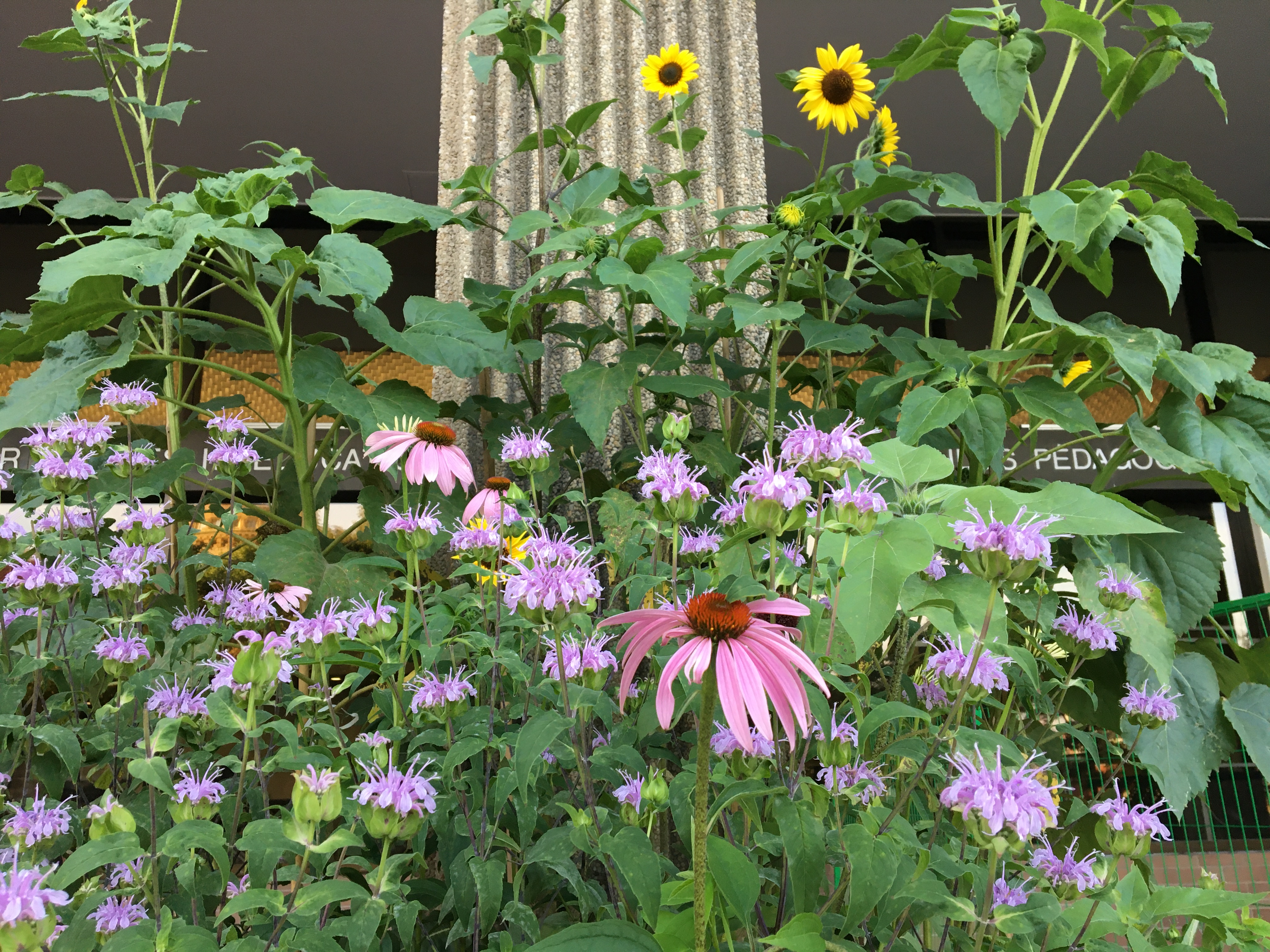
The Environmental & Sustainability Education garden encourages the preservation and protection of natural ecosystems by creating a healthy community of living organisms. Its plantings support a wide system of living things, from the plants themselves, to pollinators (like butterflies and bees) that they attract, to the people that will experience it. This colourful garden includes native plants that are eco-friendly, water wise and low maintenance to demonstrate OISE's commitment to sustaining a healthy environment. This garden also represents the importance of balance (through cycles and symbiosis) in supporting other species, eco-literacy, and plants indigenous to our region, which require little maintenance and consume little water.
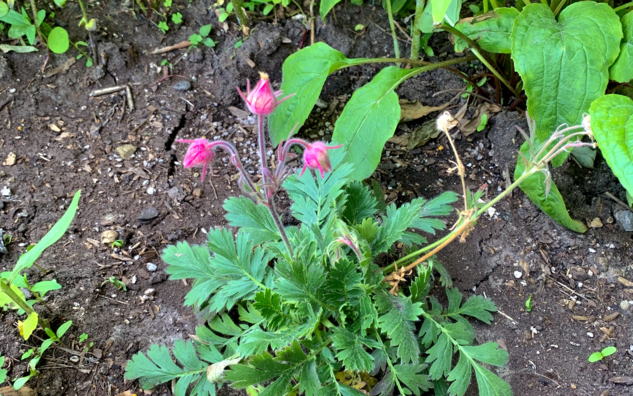
Prairie Smoke - nebaneyaa-nikweyaag - Geum triflorium
Prairie Smoke is native to Ontario and a hardy, low maintenance plant. Its blooms are pink and purple and it attracts birds and butterflies. It is an early bloomer in the spring, with pink Seuss-like flowers. Its presence in the ESE garden represents the importance of local environments to the preservation of the Earth.

Giant & Semi-Dwarf Sunflower - ziinda`aagan+ag - Helianthus giganteus/ Helianthus mezzulah
The bright and sunny sunflower stands for optimistic strength and hope in the garden. Its familiar yellow blooms draw visitors in and welcome them into the garden experience. Popular with pollinators, the sunflower rapid growth and extension from the ground up mirrors that of environmental and sustainability education at OISE.
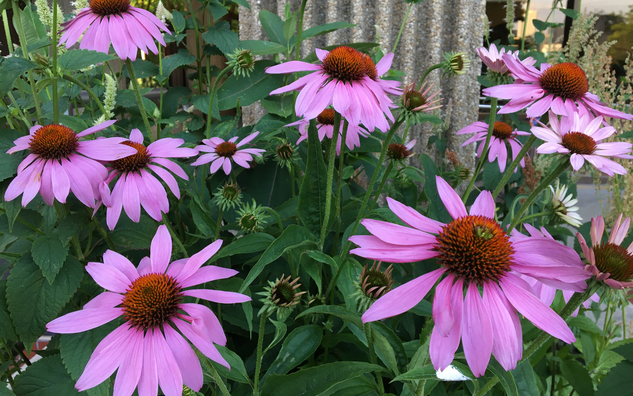
Purple & Pale Purple Coneflower - Miinaande Giizisobagoons - Echinacea pallida
Echinacea is a plant that is native to North America and has many uses. Medicinally, it has been used extensively in the treatment of colds and infections as it is thought to stimulate the immune system and decrease inflammation. Drought tolerant, it blooms in beautiful pinks and purples in the summer. It attracts bees, butterflies and hummingbirds, and represents the interconnection of the ecosystem.

Milkweed - cabo' sîkûn/înîni'wûnj - Asclepias syriaca
Milkweed has light pink flowers and contains a bitter white sap that protects it from predators. The sap also is essential nectar for many butterfly species, including monarchs. It has been included here to symbolize the role that sustainability plays in the pollination of ideas across disciplines.
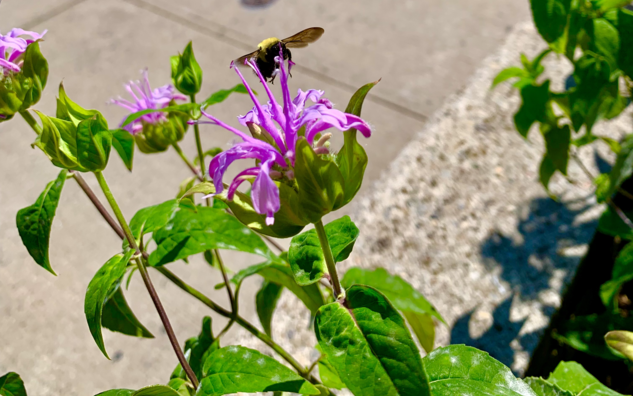
Wild Bergamot - weca' wûs wackwî' nek - Monarda fistulosa
Wild bergamot or bee balm is a fragrant native plant to Ontario that has clusters of soft pink or purple flowers. It has long been used by Indigenous peoples of North America as a medicine and antiseptic to treat colds (brewed as tea) and infections and wounds (ground into a poultice). Tea made from wild bergamot has also been used as a stimulant. In this garden it is a reminder of the importance of Indigenous knowledges and perspectives to a sustainable world.
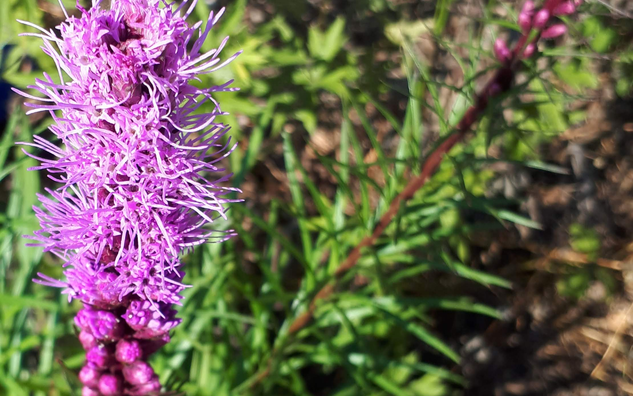
Dense Blazing Star - Liatris spicata
Dense Blazing Star is a wild flower with delicate purple blooms that attract butterflies. It is on the margins; it has been listed on the COSEWIC (Committee on the Status of Endangered Wildlife in Canada) Candidate List and it is suspected that it is at risk of extinction or extirpation. Its inclusion in the garden highlights the need to view communities broadly and inclusively; typically we focus on animals (usually mammals) that are at risk rather than on other living things like plants.
Garden Map
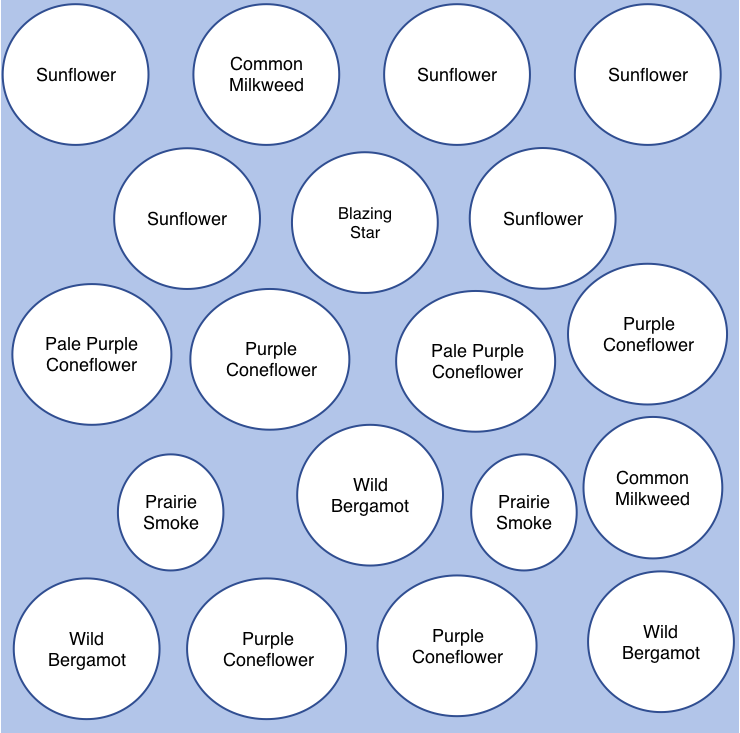
Resources on the Environmental and Sustainability Education Garden
Articles and Books:
Stone, M. K. (2009). Smart by nature: Schooling for sustainability. Healdsburg, CA: Watershed Media.
Websites:
City of Toronto’s Biodiversity Booklets
Education for Sustainable Development Toolkit
Green Education Foundation – Garden as a teaching tool
Sustainable Agriculture in Education